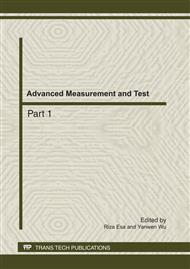p.1145
p.1151
p.1157
p.1162
p.1166
p.1172
p.1178
p.1183
p.1189
One Reduction Method of Telecommunications Nework Events
Abstract:
In this paper, the mass events of telecommunication network are researched, the none fault events reduction method and repeat events reduction method are proposed after researching the events of telecommunications network, on the basis of researching the characteristics of the events of telecommunications network, the improved methods were proposed. Further, in the aspect of event reduction performance, proposed the fingerprint algorithm, the events reduction process of inefficient much text comparison convert efficient integer value comparison, effectively improve the performance of the event reduction, meets real-time event handling performance requirements.
Info:
Periodical:
Pages:
1166-1171
Citation:
Online since:
July 2011
Authors:
Price:
Сopyright:
© 2011 Trans Tech Publications Ltd. All Rights Reserved
Share:
Citation:


